長谷寺(鎌倉)/ Hase temple in Kamakura
紅葉と紫陽花と「鎌倉江の島七福神」の「大黒様」で有名な奈良時代からある鎌倉のお寺「長谷寺」。/ Hase-dera, a temple in Kamakura from the Nara era, is famous for its autumn leaves, hydrangea, and “Daikoku-sama” of “Kamakura Enoshima Seven Lucky Gods”.
私にとっては、2回目の「長谷寺」です。
For me, this is the second time visiting “Hase-dera” temple.
先回は、10年以上前に家族で紅葉の時期の夕方に車で来たことがあります。その時は、長谷寺すぐ横の駐車場はいっぱいで、150mくらい離れた駐車場に停めたと思います。
Last time, my family came by car more than 10 years ago in the evening of autumn colors season. At that time, the parking lot right next to Hase-dera temple was full and we parked at a parking lot about 150m away.
しかし、今は、参拝客自体が少ないので、すぐ横の駐車場もガラガラの状況でした。
However, since there are only a few worshipers at the moment, the parking lot right next door was almost empty.
■目次/Contents
- 長谷寺とは / What is Hasedera?
- 「長谷寺」の山門 / Main gate of Hase-dera temple
- 妙智池と放生池 / Myochi pond and Hosei pond
- 「鎌倉江の島七福神」の「大黒天」 /”Daikokuten” of “Kamakura Enoshima 7 Lucky Gods “
- 弁天堂と弁天窟 / Bentendo and Benten Cave
- 「観音堂」と道中 / “Kannondo” and on the way
- 見晴台と眺望散策路 / Observatory and view walkway
- まとめ / Sumary
■長谷寺とは / What is Hasedera?
長谷寺(HP)は、江ノ島電鉄(江ノ電)の長谷駅から徒歩5分のところにあります。
Hase-dera temple is a 5-minute walk from Hase Station on the Enoshima Electric Railway (Enoden).
ホームページによると、開創は、奈良時代の天平八年(736年)とのことです。聖武天皇の治世下に勅願所と定められた古いお寺になります。正式名称は、「海光山慈照院長谷寺」と言います。
According to the Hase-dera temple’s homepage, the founding is the Tenpyo 8th year of the Nara era (736). It is an older temple that was designated as a royal residence under the reign of Emperor Shomu. The official name is “Kaikozan Jishōin Hasedera”.
本尊は、木彫仏としては日本最大級(高さ9.18m)の尊像である「十一面観世音菩薩像」です。開山は、徳道上人です。
Honson is the 11 faces Kanzeon Bodhisattva statue, one of the largest statues in Japan (height 9.18m) for a wood carving Buddha. the first monk is Tokudo.
「長谷寺」は、池の周囲の紅葉が色づく秋には、ライトアップがあり、非常に多くの参拝客が訪れます。また、6、7月には、40種類2500株のアジサイ(紫陽花)も、眺望用の散策の道中に植えられています。今回は、花が刈られた後でした。
“Hase-dera” temple is lit up in the autumn when the maple leaves around the pond are colored, and a large number of worshipers visit. Also, in June and July, 2,500 hydrangea plants of 40 kinds are planted along the way for a stroll. This time it was after the flowers were cut.
また、「長谷寺」は、「鎌倉江の島七福神」の1つ「大黒天」が祀られています。
In addition, “Hase-dera” temple is enshrined in “Kamakura Enoshima Seven Lucky Gods”, “Daikokusama”.
■「長谷寺」の山門 / Main gate of Hase-dera temple
「長谷寺」の山門は、個人的には非常に好きなものの1つです。理由は、こじんまりとした造りに、手入れされた格好いい松の緑と、赤字に「長谷寺」と黒文字で書かれた提灯のコントラストが非常に良い味を出しているからです。
I personally like the main gate of “Hase-dera” temple. The reason is that the main gate is the small size, but the green color of groomed pine tree and the red color of lantern written in black with “Hase-dera” are very good contrasted. It gives you a very good feel.

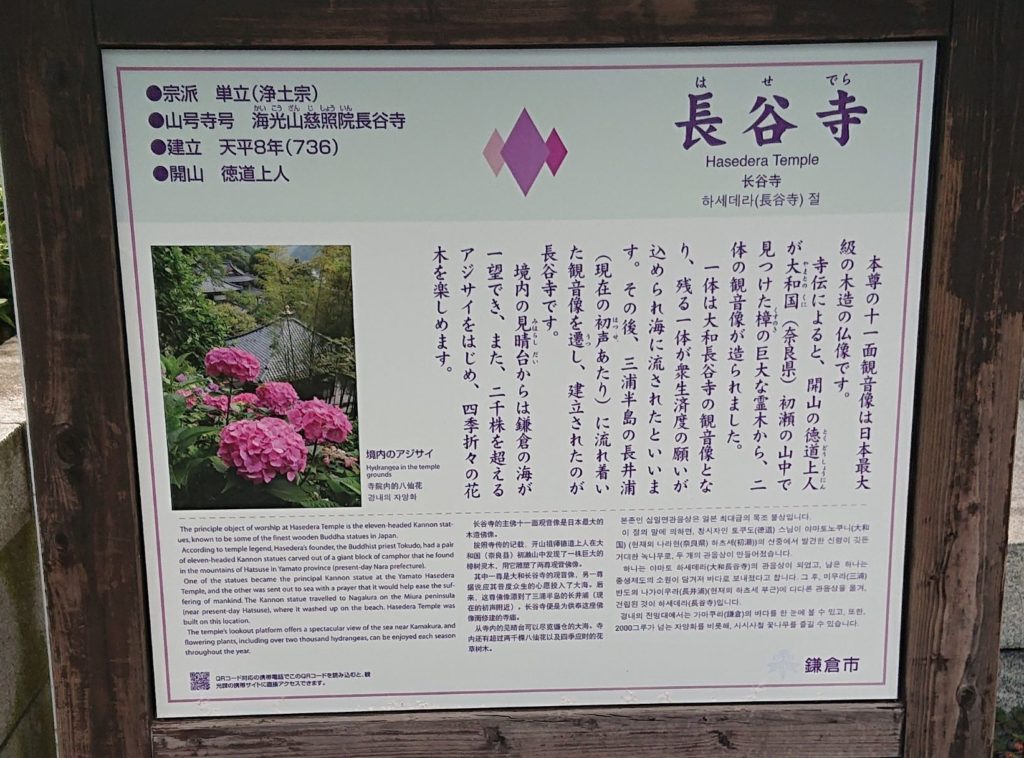
山門の左手に、受付と入口があります。
There is a reception and entrance on the left side of the main gate.
拝観料は 大人 400円、小人 200円です。
Admission is 400 yen for adults and 200 yen for children.
■妙智池と放生池 / Myochi pond and Hosei pond
下図は、「妙智池」です。右手の紅葉もさることながら、秋には、池の周りの木々が色づき、池の水面に反射します。特に、ライトアップされると幻想的な空間を作り出します。
The figure below is “Myochi Pond”. In addition to the maple leaves on the right in the picture, in autumn, the trees around the pond change color and reflect on the surface of the pond. Especially when it is lit up, it creates a fantastic space.
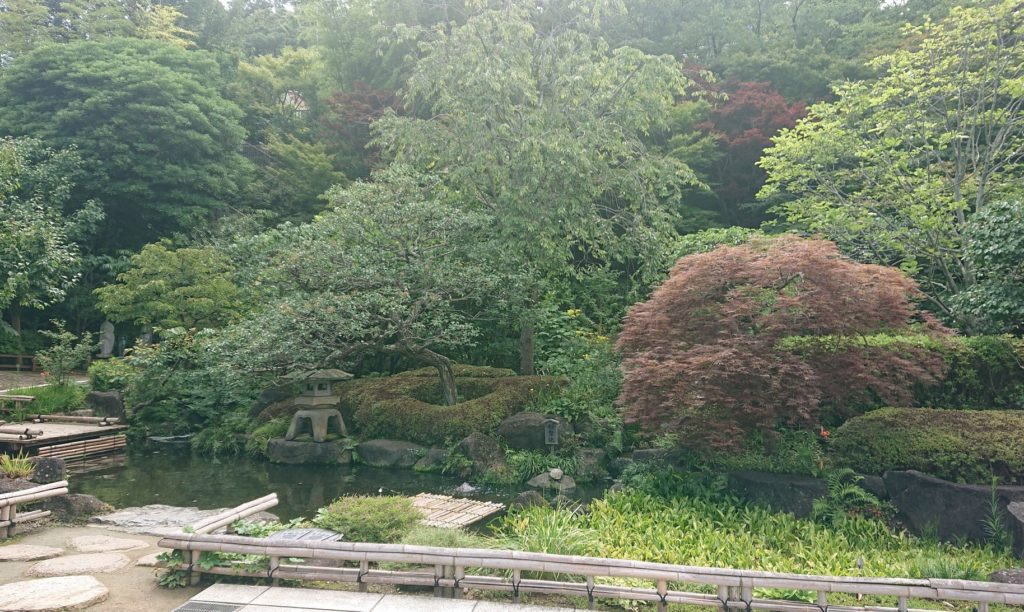
「法生池」の周囲にも様々な木々が植えられており、手入れも非常に良き届いており、身を楽しませてくれます。こちらの池は、橋で渡ることができます。また、小さいながらも噴水や、敷地の上から流れてくる水の滝もあり、音も楽しむことができます。池には、多くの鯉が泳いでいます。
Various trees are planted around the “Hosei Pond”, and the maintenance is very good, which will make you happy. This pond can be crossed by a bridge. In addition, you can enjoy the sound even though it is a small fountain and there are small waterfall that flows from the top of the site. Many carps are swimming in the pond.
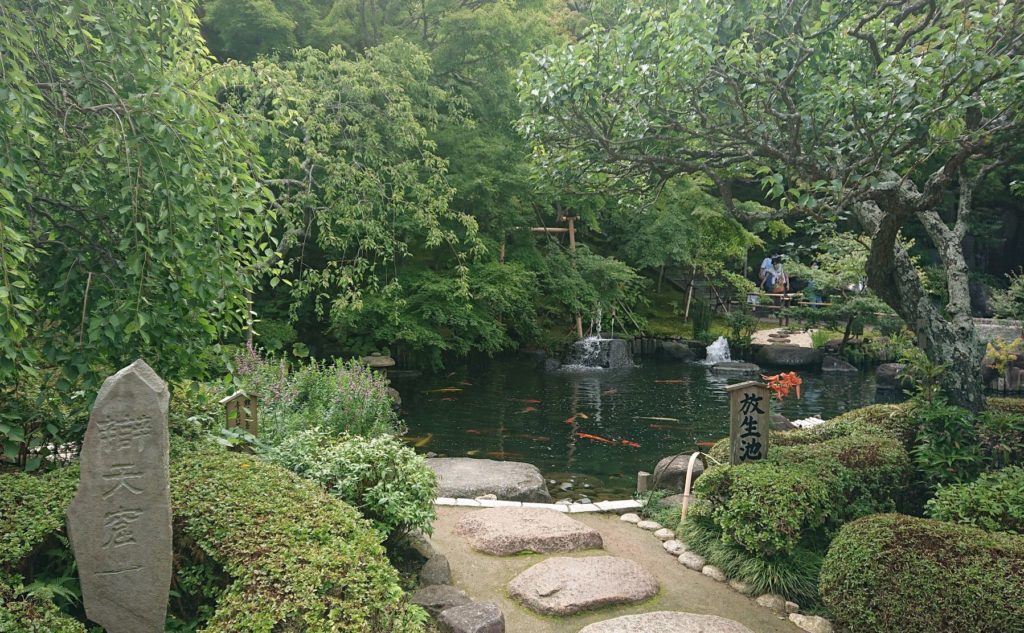
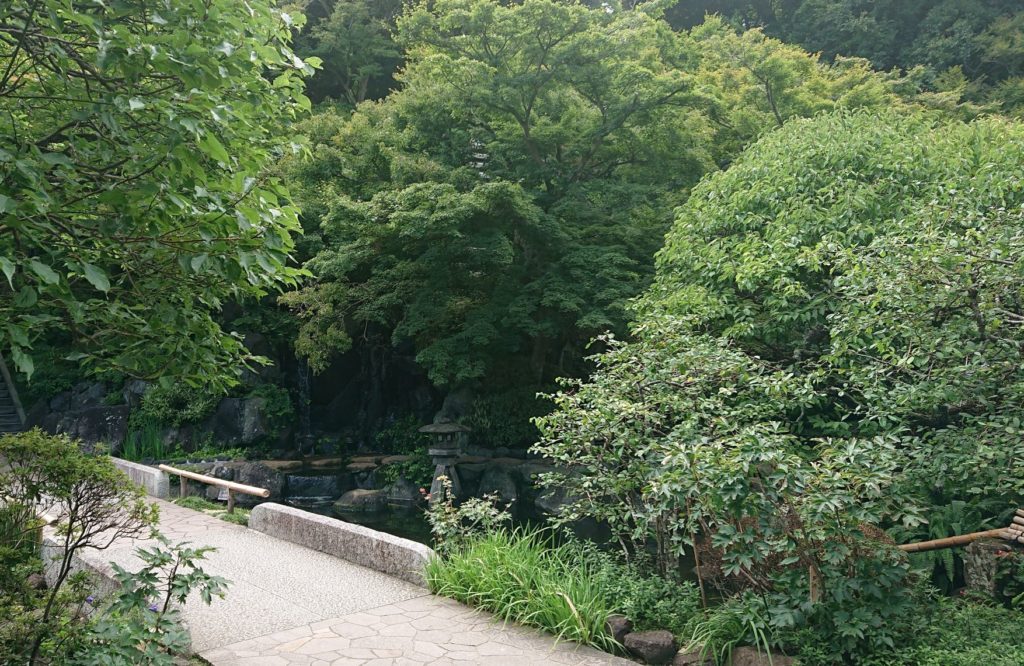
■「鎌倉江の島七福神」の「大黒天」 /”Daikokuten” of “Kamakura Enoshima 7 Lucky Gods “
池を左手に、進んでいくと、右手に、「大黒堂」が見えてきます。
As you proceed along the pond on your left, you will see “Daikokudo” on your right.
「大黒天」(マハーカーラ)は、ヒンドゥー教のシヴァ神の異名であり、これが仏教に取り入れられたもの。つまり、原点は、インドの神様です。
“Daikokuten” (Mahākāla) is a synonym for Hindu Lord Shiva, which was introduced into Buddhism. In other words, the origin is the Indian god.
「大黒天」は、仏教の守護神達の一人で、軍神・戦闘神、富貴爵禄の神とされたが、日本では、財福を強調して祀られている。
“Daikokuten” is one of the guardian deities of Buddhism and was said to be a war god, a battle god, and a god of wealth, but in Japan, it is enshrined for its wealth.
日本では、真言宗、天台宗、日蓮宗で信仰されてきた。
In Japan, it has been worshiped by Shingon sect, Tendai sect, and Nichiren sect.
七福神の一柱の「大黒様」として知られる食物・財福を司る神となったが、現在においては、米俵に乗り福袋を背負い、打出の小槌を持った微笑の長者形で表される。
He became a god of food and wealth known as “Daikoku-sama,” a pillar of the Seven Lucky Gods, but nowadays he is represented by a smiling elder with a good fortune hammer, carrying a lucky bag on his back and riding rice bags.

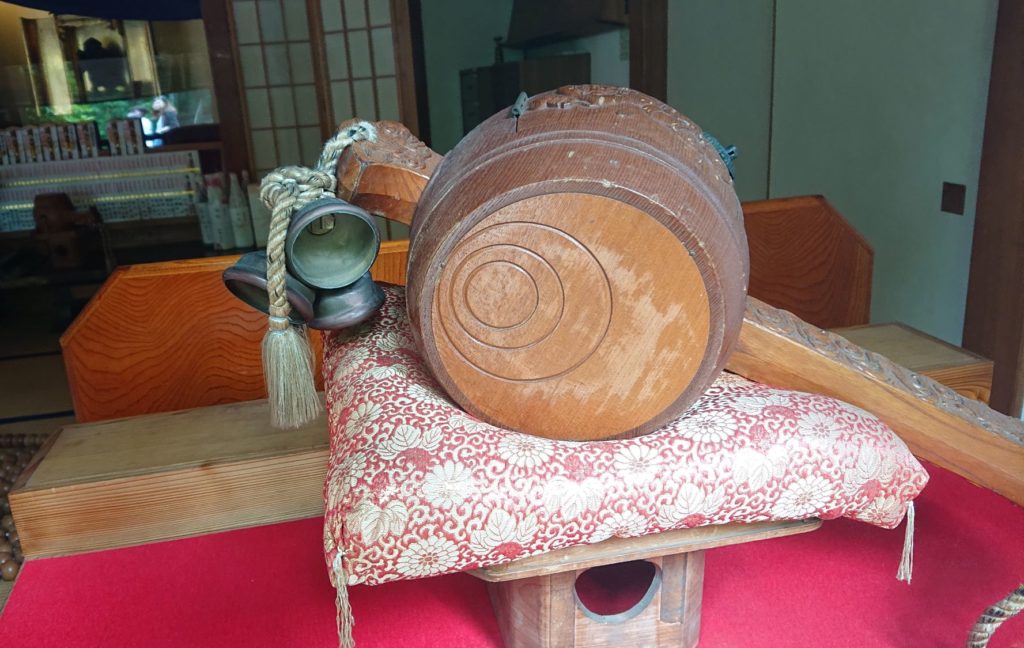
「大黒天」は、下の図で、前列の右端になります。
“Daikokuten” is the right edge of the front row in the figure below.
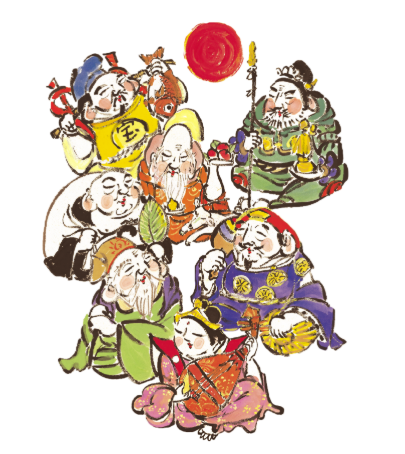
■弁天堂と弁天窟 / Bentendo and Benten Cave
「弁天堂」は、「大黒堂」の向かいにあり、空海(弘法大師)が刻んだという伝承をもつ弁才天像を祀っています。
“Bentendo” is across from “Daikokudo” and enshrines a Bensai heavenly statue engraved by Kukai (Kobo Daishi).
「弁財天」は、「大黒天」同様、ヒンドゥー教由来で、女神であるサラスヴァティーが、仏教に取り込まれた呼び名です。
Like “Daikokuten”, “Benziaten” is a name derived from Hinduism and the goddess Sarasvati was incorporated into Buddhism.
「弁財天」は、「七福神」の一員として宝船に乗り、縁起物にもなっています。
As a member of the Seven Lucky Gods, “Benzaiten” is a treasure ship and a lucky charm.
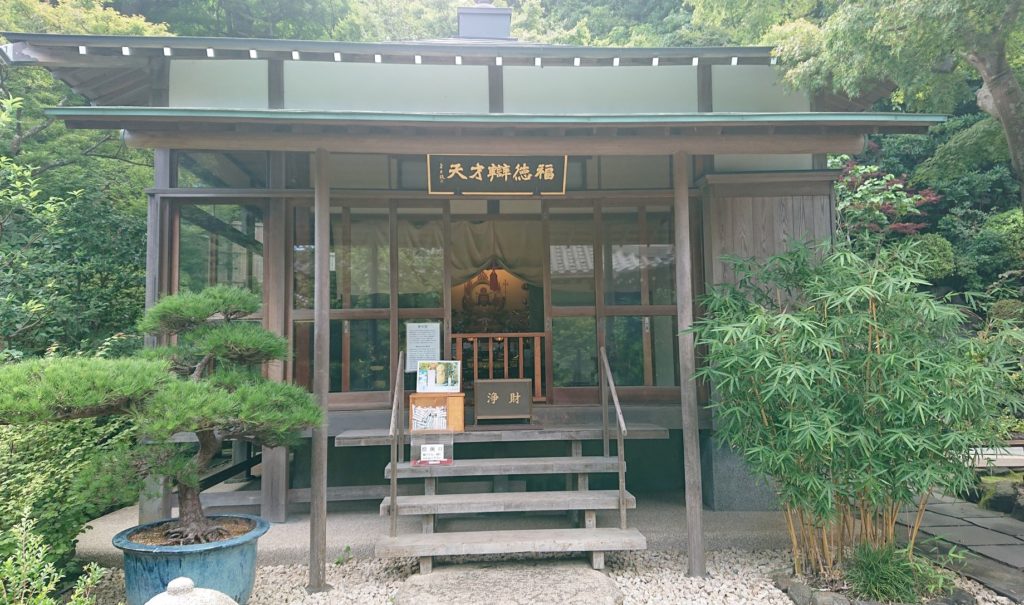
ここ「長谷寺」には、「弁天窟」という洞窟があります。この入口には、鳥居があり、左手には、小さな池があります。
Here at “Hase-dera” temple, there is a cave called “Bentenku-kutsu”. At this entrance is a torii gate (red gate), and on the left is a small pond.
写真を撮るときは、気づかなかったのですが、池の周りには、「七福神」の像が立っています。
I didn’t notice it when I took the picture, but around the pond there are statues of the Seven Lucky Gods.
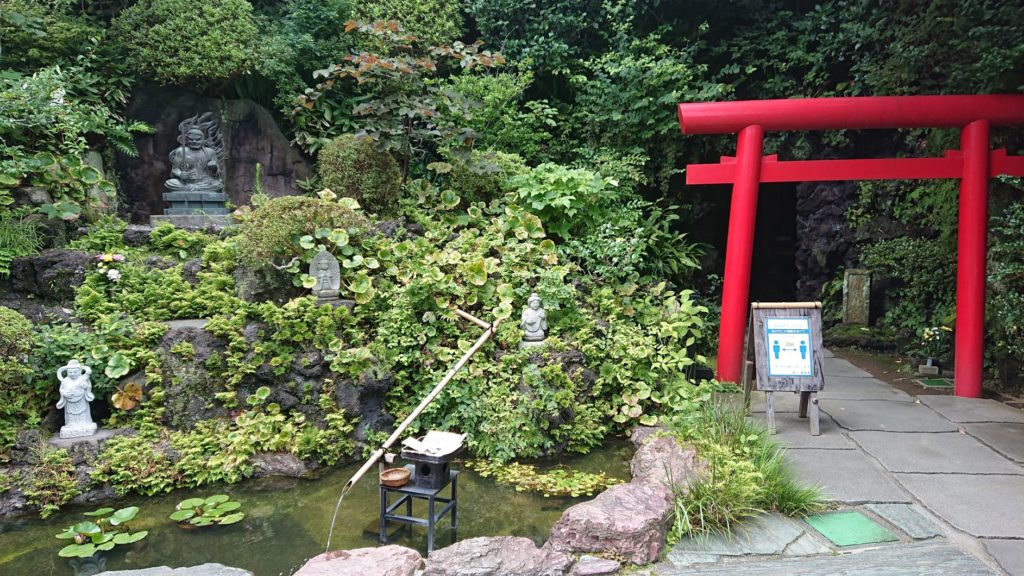
洞窟内に入ると、背を屈めないと歩けない高さの箇所もあります。窟内は、蝋燭で照らされています。混んでいなければ、1、2分で出口につきます。
Once inside the cave, there are some places where you cannot walk without bending your back. The interior of the cave is illuminated by candles. If it’s not crowded, you’ll arrive at the exit in a few minutes.
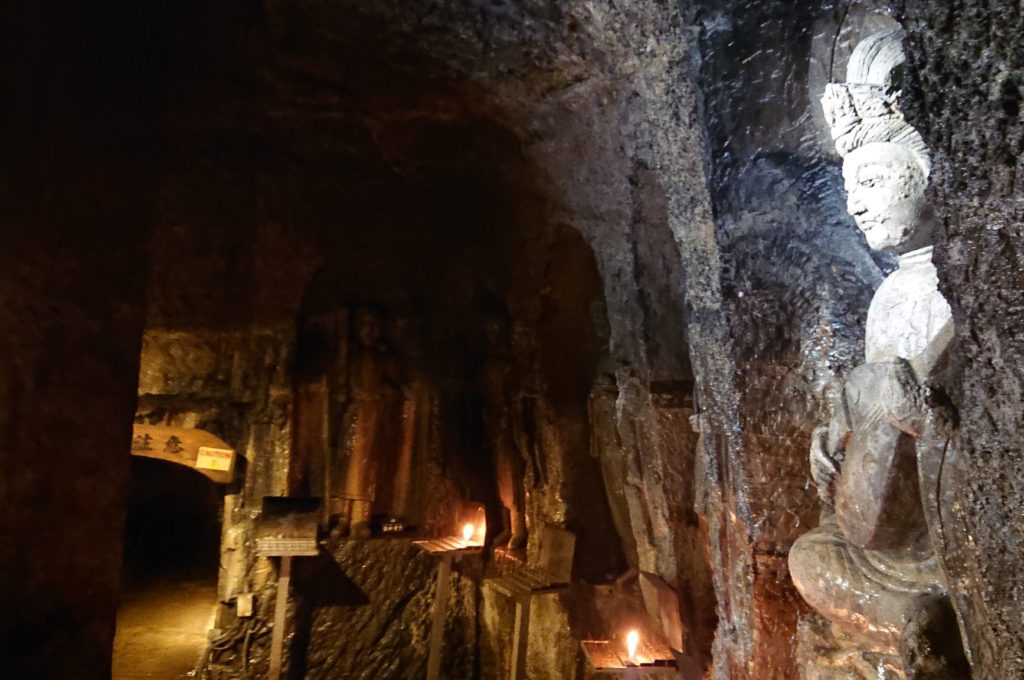
■「観音堂」と道中 / “Kannondo” and on the way
階段と坂道を登って「観音堂」に向かいます。
Climb the stairs and slope to the “Kannondo”.
途中、「良縁地蔵」という縁起の良い地蔵様が右手の下に小さくあります。油断していると気づかないかもしれません。この「長谷寺」のマスコットになっているようです。
On the way, there is a lucky Jizo called “Ryoen Jizo” under the right hand. You may not notice that you are out of your control. It seems to be the mascot of this “Hase-dera” temple.
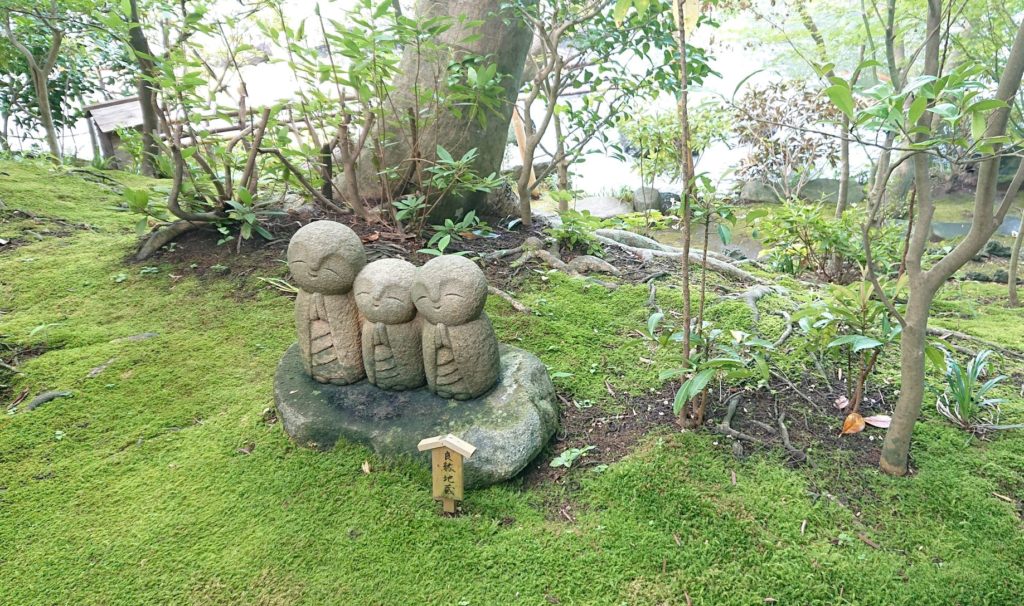
次に、「地蔵堂」があります。ここには、金色の地蔵が祀られています。
Next, there is “Jizodo”. A golden Jizo is enshrined here.
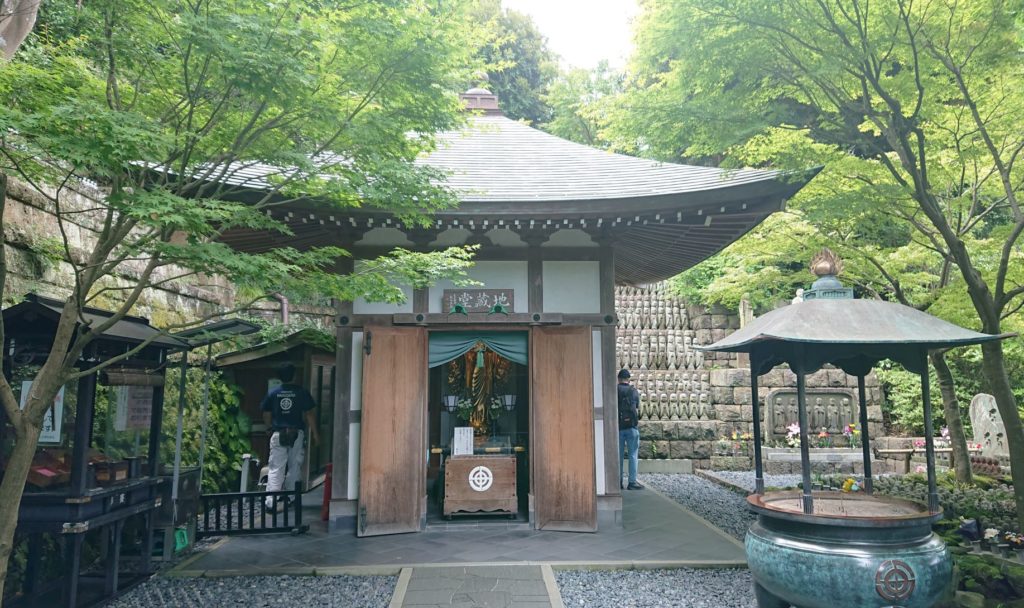
更に、階段を上っていくと、「観音堂」「阿弥陀堂」が正面に見えてきます。
Furthermore, when you climb the stairs, you can see the “Kannondo” and “Amidado” in front.
その右手に、「鐘楼」があります。
To the right is the Bell Tower.
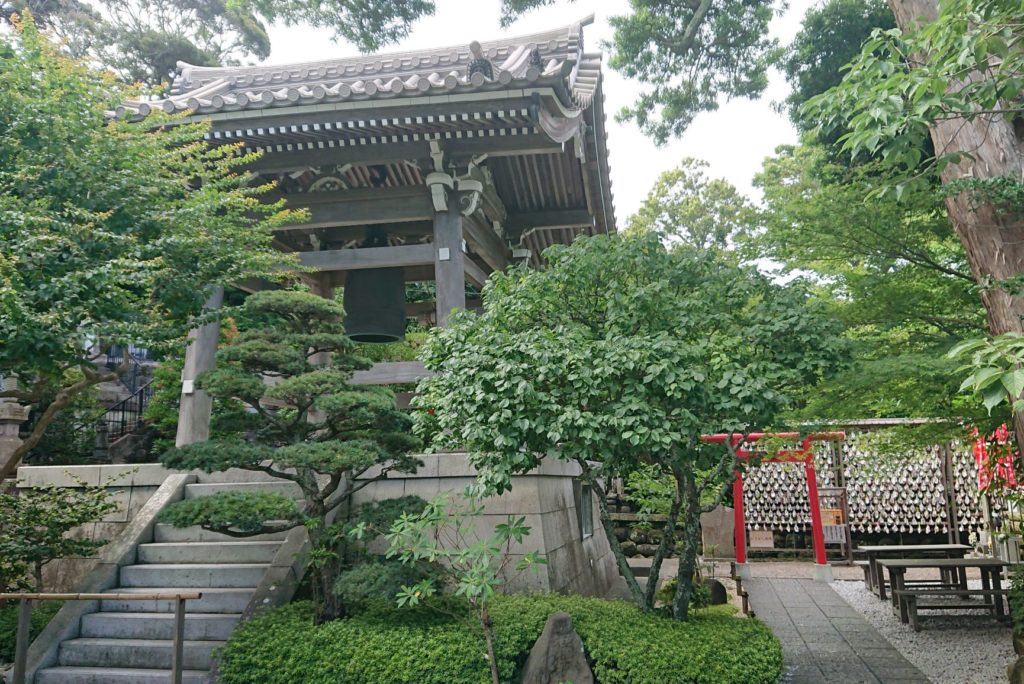
「観音堂」になります。堂内は、写真撮影禁止なので、「十一面観世音菩薩像」を収めることはできませんでした。「十一面観世音菩薩像」は、金色に輝いた9.18mの木彫像なので、かなり圧倒されます。建物自体も、その「十一面観世音菩薩像」を囲っているので立派です。
It becomes “Kannondo”. Photography was prohibited inside the hall, so we couldn’t any picture the “11 faces Kanzeon Bodhisattva Statue.” The 11 feces Kanzeon Bodhisattva statue is a gold-colored 9.18m wooden statue, so it is overwhelming. The building itself is also magnificent because it encloses the “11 faces Kanzeon Bodhisattva statue.”
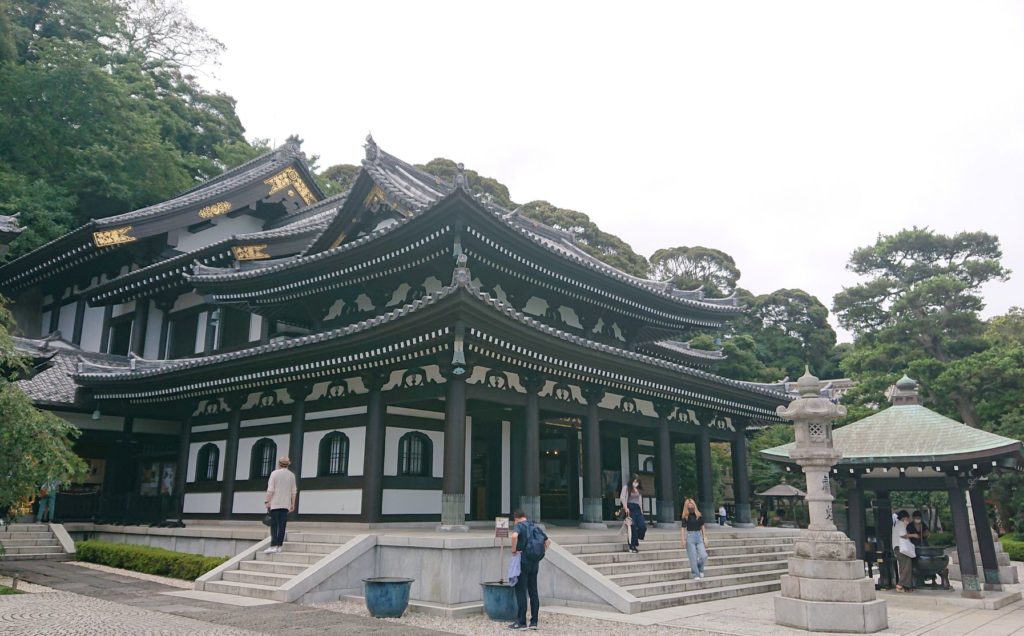
■見晴台と眺望散策路 / Observatory and view walkway
「観音堂」を正面に、左手に進むと、「由比ガ浜」が一望できる「見晴台」に出ます。この日は、天気予報が外れ、青空が見えます。
If you go to the left with the “Kannondo” in front, you will see “Miharashidai” (observatory) where you can see “Yuigahama beach”. On this day, the weather forecast is off and you can see the blue sky.
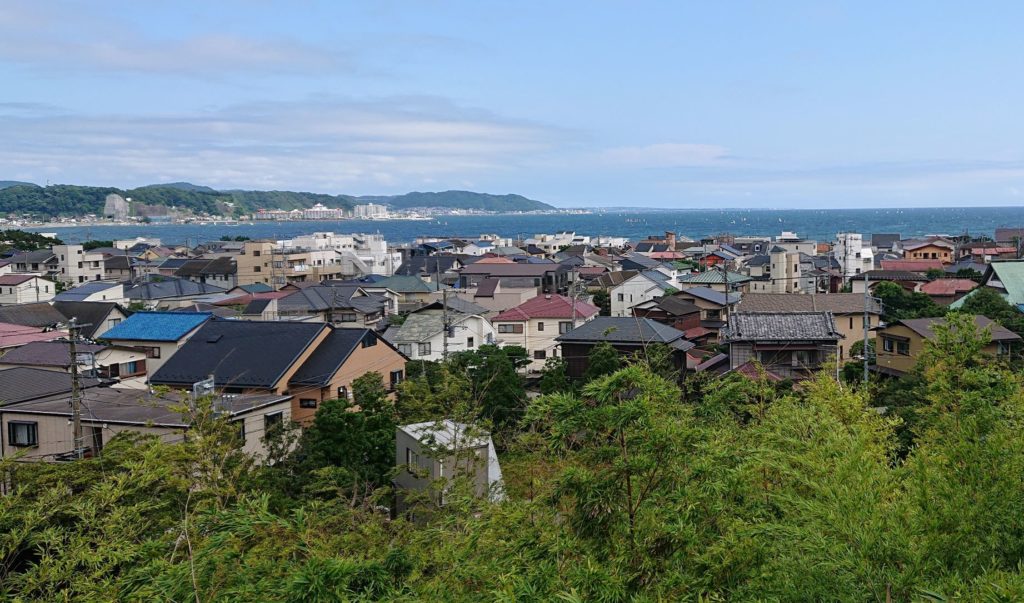
「見晴台」の山側には、「経堂」があります。この右手に「眺望散策路」の入口、左手が出口になっております。
“Kyodo” is on the mountain side of “Miharashidai” (observatory). The entrance to the “Tyobo Sansakuji” (View Walkway) is on your right out of the “Kyodo”, and the exit on your left.
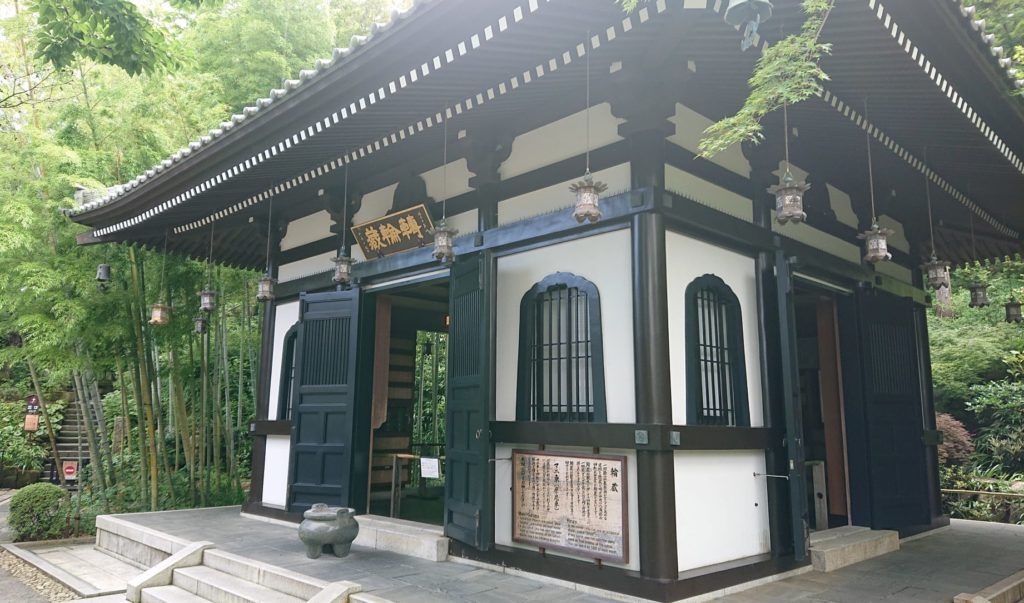
「眺望散策路」の両側には、紫陽花の木々が無数に植えられております。
Innumerable hydrangea trees are planted on both sides of the “Tyobo Sansakuji” (view walkway).
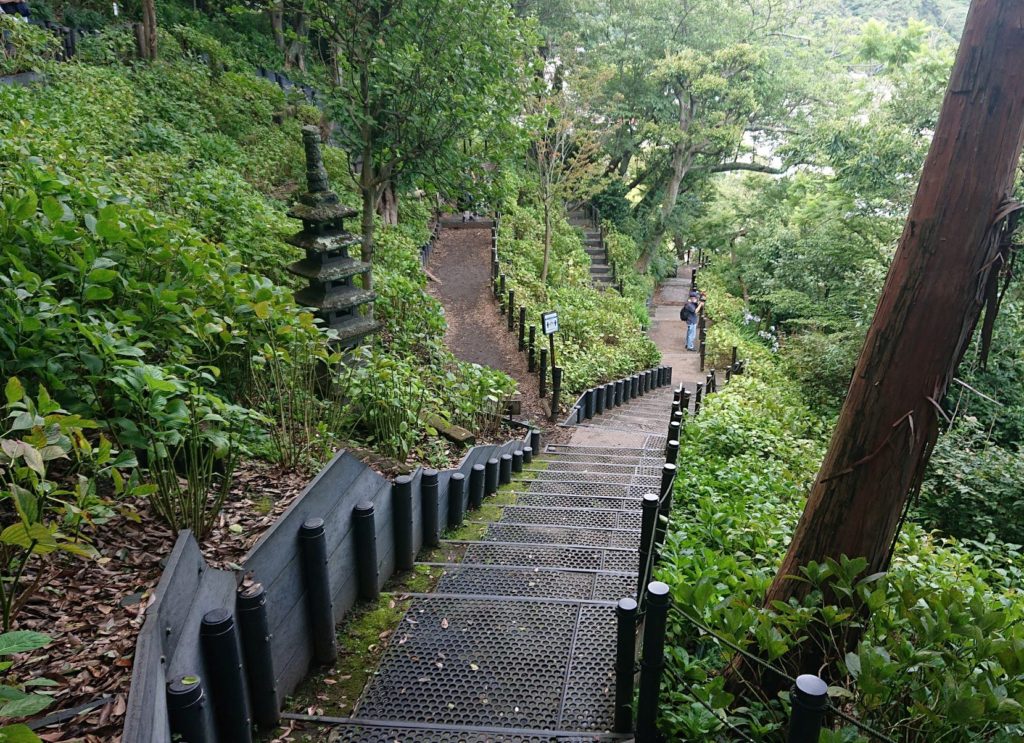
「眺望散策路」の一番高いところからは、更に、「由比ガ浜」が見えます。この日は、良い波が幾重にも浜に打ち寄せており、しばらく海を眺めていました。というのも、天気予報が晴れならば、海上でSUP(Standup Paddle)でも予定したので、うらやましいという思いです。次の休みが楽しみです。
From the highest point of the “Tyobo Sansakuji” (view walkway), you can see “Yuigahama beach”. On this day, many good waves hit the beach and I was watching the sea for a while. If the weather forecast is fine, I plan SUP (Standup Paddle) on sea, so I’m envious. I’m looking forward to the next chance.
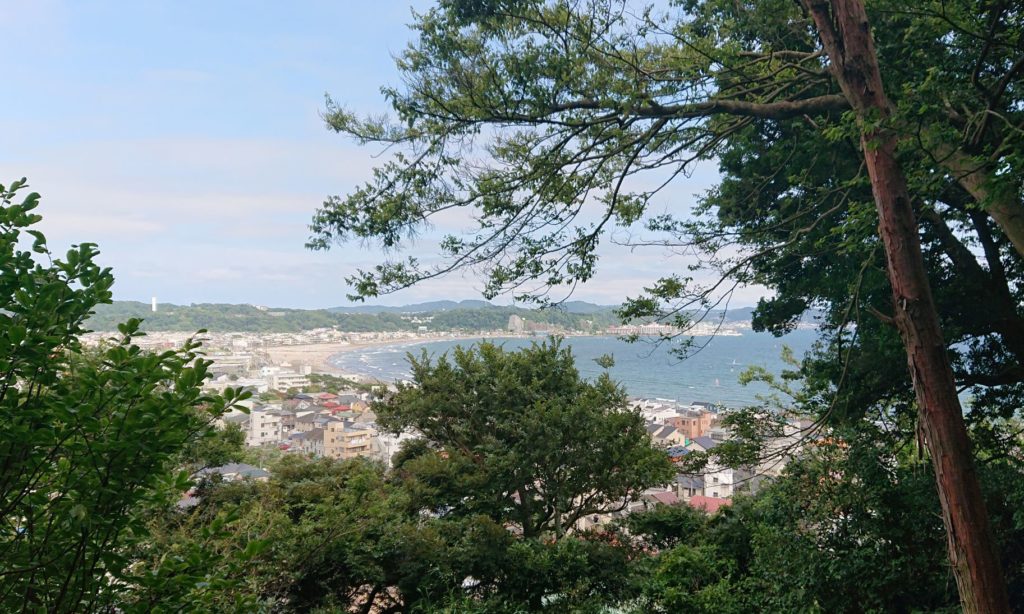
■まとめ / Sumary
「長谷寺」は、拝観料金は高めです。しかし、「長谷寺」の境内は、手入れの行き届き、季節を楽しめる木々が非常に多くあること、また浄財を納める場所も多く(祈る場所が多い)、天気の良い日には、見晴らしも良いなど、十分満足のできるお寺だと思います。鎌倉の神社巡りでは、外せないお寺です。
The admission fee for “Hase-dera” temple is higher than others. However, in the precincts of “Hase-dera” temple, there are many trees that are well maintained and you can enjoy the seasons. Also, there are many places where you can put your purification assets (there are many places to pray), and when the weather is nice, you have a good view. I think it’s a temple that you can fully enjoy. It is a temple that cannot be missed when visiting shrines in Kamakura.



この記事へのコメント